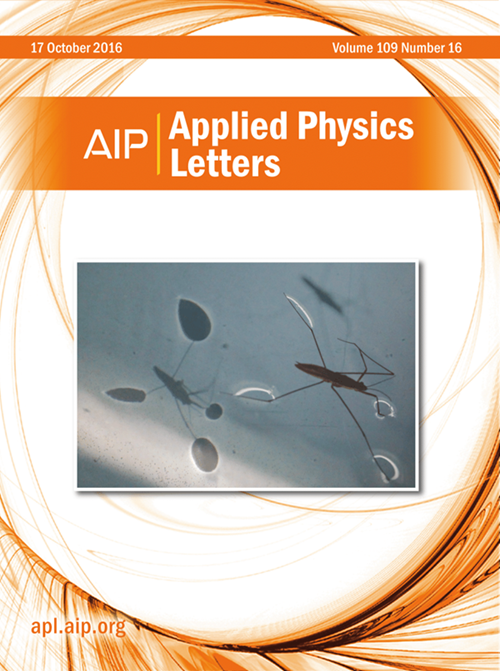An adaptive harmonic AFM probe with enhanced sensitivity for cellular imaging
IF 3.6
2区 物理与天体物理
Q2 PHYSICS, APPLIED
引用次数: 0
Abstract
Accurate classification of cellular images plays an indispensable role in early cancer diagnosis. Based on signal enhancement, harmonic atomic force microscopy (AFM), distinguished by its high resolution, demonstrates unique advantages in rapid acquisition and analysis of cellular images. Traditional harmonic probes are generally designed without sufficient consideration of environmental and sample-induced interference on probe vibration. However, in cellular imaging, environmental perturbations and heterogeneous mechanical properties of samples can significantly compromise imaging quality. To address the challenge of precision imaging in multi-environment cellular studies, we have developed an adaptive harmonic atomic force microscopy (A-HAFM) probe capable of generating stable harmonic signals in both atmospheric and liquid environments, enabling high-resolution cellular imaging and precise cell classification. Experimental studies involving 3600 samples of human cervical epithelial cells and human cervical cancer cells with varying invasiveness (HeLa and SiHa) demonstrated that the A-HAFM probe achieved 52.17% improvement in amplitude response sensitivity compared to conventional AFM, along with 60% enhancement in imaging clarity, with classification accuracy for normal vs cancer cells improved by 7.97% and between cancer subtypes (HeLa/SiHa) increased by 12.73%. By precisely characterizing cellular substructures and identifying physiological signatures, this technology establishes a promising platform for cellular-level diagnosis and therapeutic evaluation of cardiovascular diseases, malignant tumors, and other critical illnesses.一种增强细胞成像灵敏度的自适应谐波AFM探针
细胞图像的准确分类在肿瘤早期诊断中起着不可缺少的作用。基于信号增强技术的谐波原子力显微镜(AFM)以其高分辨率的特点,在细胞图像的快速采集和分析方面具有独特的优势。传统的谐波探头在设计时一般没有充分考虑环境和样品诱发的干扰对探头振动的影响。然而,在细胞成像中,环境扰动和样品的异质力学性质会显著影响成像质量。为了解决多环境细胞研究中精确成像的挑战,我们开发了一种自适应谐波原子力显微镜(A-HAFM)探针,能够在大气和液体环境中产生稳定的谐波信号,实现高分辨率的细胞成像和精确的细胞分类。涉及3600例不同侵袭性(HeLa和SiHa)的人宫颈上皮细胞和人宫颈癌细胞样本的实验研究表明,与传统AFM相比,A-HAFM探针的振幅响应灵敏度提高了52.17%,成像清晰度提高了60%,正常细胞与癌细胞的分类准确率提高了7.97%,癌症亚型(HeLa/SiHa)之间的分类准确率提高了12.73%。通过精确表征细胞亚结构和识别生理特征,该技术为心血管疾病、恶性肿瘤和其他危重疾病的细胞水平诊断和治疗评估建立了一个有前景的平台。
本文章由计算机程序翻译,如有差异,请以英文原文为准。
求助全文
约1分钟内获得全文
求助全文
来源期刊

Applied Physics Letters
物理-物理:应用
CiteScore
6.40
自引率
10.00%
发文量
1821
审稿时长
1.6 months
期刊介绍:
Applied Physics Letters (APL) features concise, up-to-date reports on significant new findings in applied physics. Emphasizing rapid dissemination of key data and new physical insights, APL offers prompt publication of new experimental and theoretical papers reporting applications of physics phenomena to all branches of science, engineering, and modern technology.
In addition to regular articles, the journal also publishes invited Fast Track, Perspectives, and in-depth Editorials which report on cutting-edge areas in applied physics.
APL Perspectives are forward-looking invited letters which highlight recent developments or discoveries. Emphasis is placed on very recent developments, potentially disruptive technologies, open questions and possible solutions. They also include a mini-roadmap detailing where the community should direct efforts in order for the phenomena to be viable for application and the challenges associated with meeting that performance threshold. Perspectives are characterized by personal viewpoints and opinions of recognized experts in the field.
Fast Track articles are invited original research articles that report results that are particularly novel and important or provide a significant advancement in an emerging field. Because of the urgency and scientific importance of the work, the peer review process is accelerated. If, during the review process, it becomes apparent that the paper does not meet the Fast Track criterion, it is returned to a normal track.
 求助内容:
求助内容: 应助结果提醒方式:
应助结果提醒方式:


